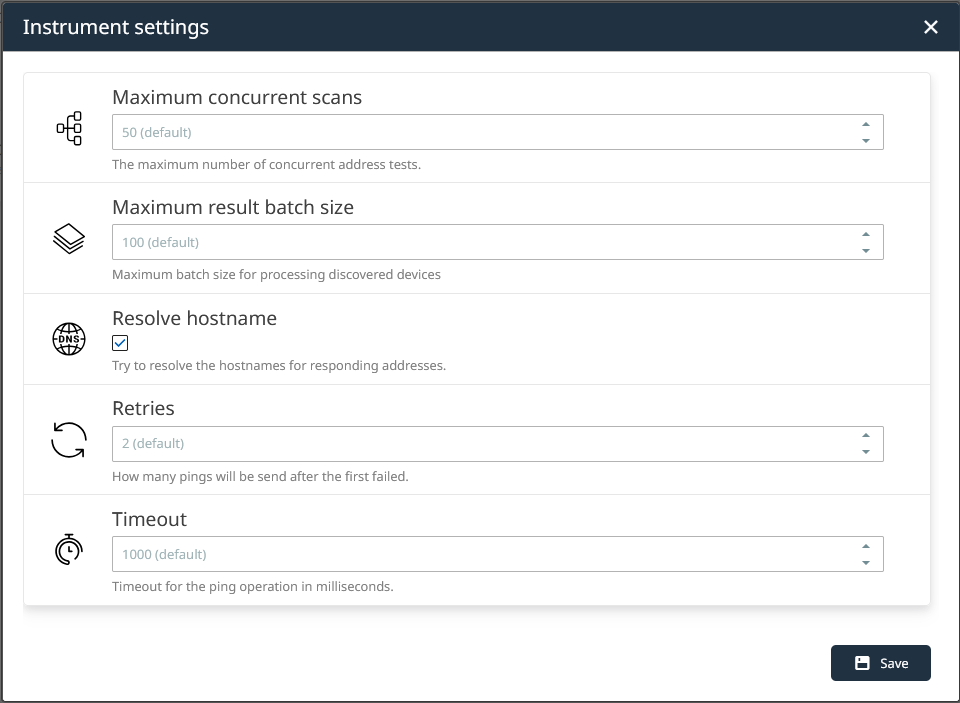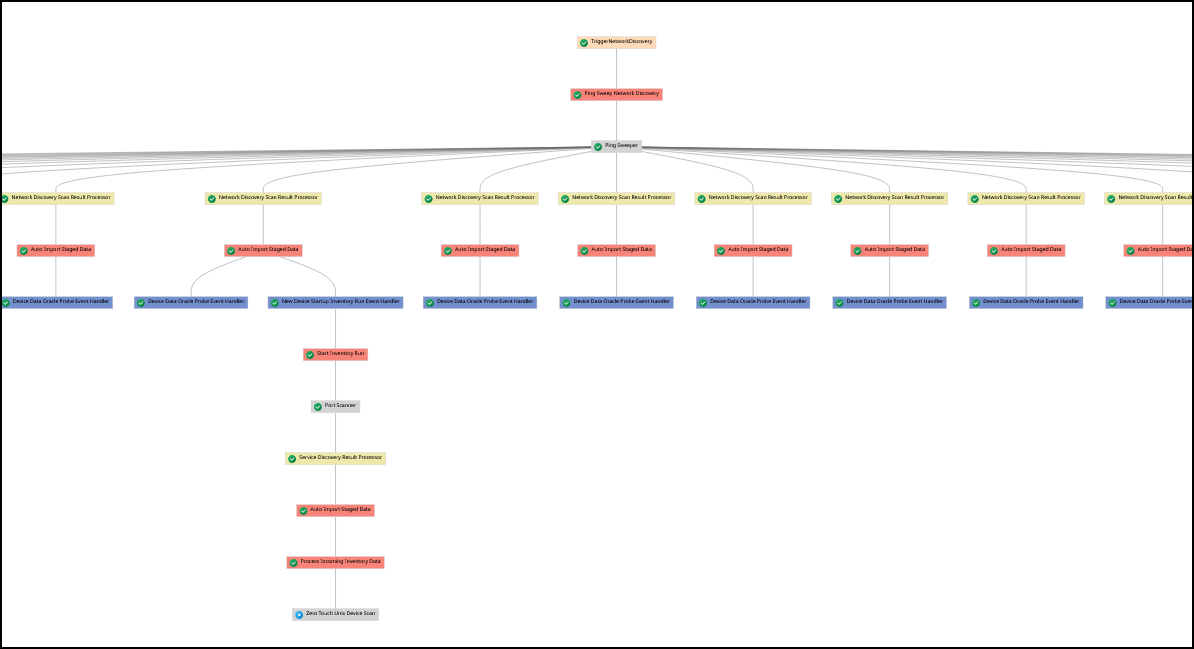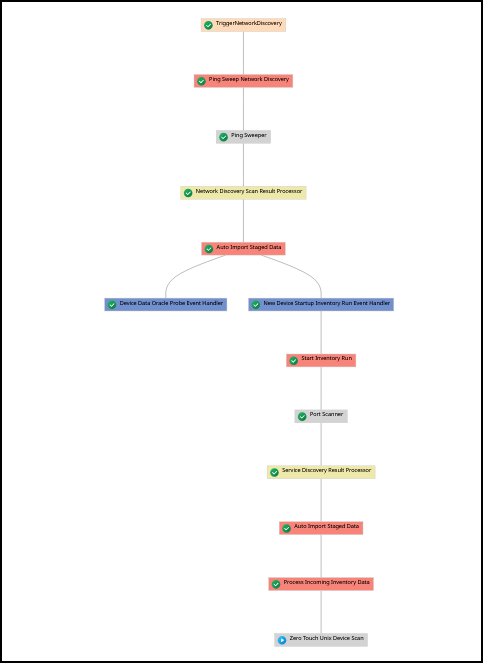All plugins provided on the Raynet One platform run out-of-the-box and do not require any changes. Generally, the default configuration is designed to work well. However, emphasizing special on-premise environments, you might want to adapt specific plugin and instrument parameters.
By changing the configuration, the platform job performance is affected. Businesses may have settled on IT management strategies, proven to work for many years. Implement them in high detail by reconfiguring the parameters.
In this chapter, we want to change the configuration of the Ping Sweep Network Discovery plugin. We take a look at and edit the Ping Sweeper instrument configuration. It is a good example due to its simplicity. We perform network discovery to observe the impact of the change.
Requirements:
•The Ping Sweep Network Discovery plugin is enabled.
•A valid network definition is added.
•An authorized runner is added, able to route to all devices targeted by the network definition.
1.Make use of the steps learned from the previous chapter to navigate to the Ping Sweeper Instrument settings window. The instrument is part of the Ping Sweep Network Discovery plugin.

•The Maximum result batch size parameter is set to its default, which is 100. It defines the work-load division performed on the detected results of ICMP network probing. Greater work-load division may imply higher efficiency using parallel processing (multi-threading). The lower the parameter, the more batches are created, the greater the work-load division. Fine-tuning this value requires a lot of experience in IP networking and the characteristics of the platform. Let's set this parameter to 1 to see how much of an impact it has. Afterwards, click on Save to submit the change.

2.Perform a discovery run via Ping Sweeper on the network definition from the requirements.

Cut out of the discovery run job graph showing the Ping Sweeper instrument's execution. Its results are divided into many Network Discovery Scan Result Processor objects, allowing their parallel execution. The grade of efficiency is factored by the cost of single work-load initiation and the actual count of electrical clock-based circuitry able to process the tasks.

This job graph is unrelated to the discovery job we just executed. It was performed with a batch size of 100 instead. If we compare it to the previous job graph, there is only one Network Discovery Scan Result Processor object, reducing the scope of parallel execution.
This step-by-step guide has shown you the impact of plugin instrument configuration on platform performance. Choose wisely how to run things. Your decisions shape your competitiveness of tomorrow.
|
Note: |